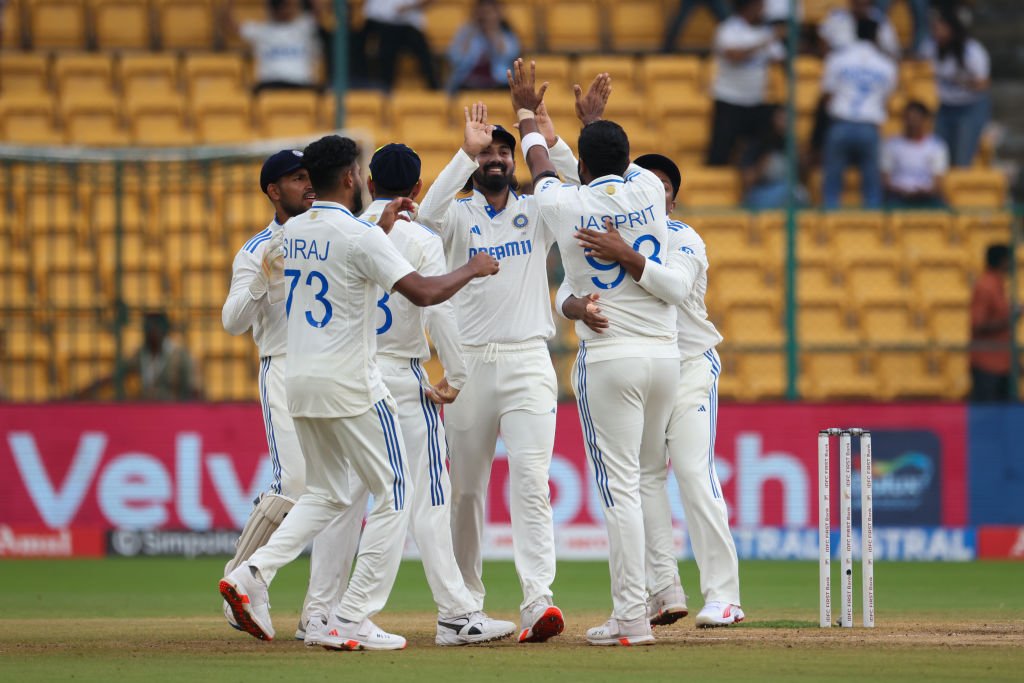
India’s second Test against New Zealand in Pune has sparked much conversation due to significant changes in their playing XI. KL Rahul, Mohammad Siraj, and Kuldeep Yadav were all excluded from the team, drawing widespread attention from fans and experts. These changes appear to be a calculated move, with Shubman Gill, Mukesh Kumar, and Washington Sundar stepping into the lineup. With India trailing in the series, the selection adjustments are aimed at altering their momentum and finding a winning combination.
KL Rahul’s absence in the second Test was somewhat expected, as his performance in the previous matches was below par. Struggling to find consistency, Rahul’s technique was under scrutiny, especially against New Zealand’s disciplined bowling attack. As one of India’s seasoned campaigners, the decision to drop him sends a clear message that no player is immune to change, especially when results are needed. Shubman Gill, who has shown flashes of brilliance, replaces Rahul at the top of the order. Gill’s ability to counter the new ball and his potential to play long innings make him a strong choice for the opening role.
On the bowling front, Mohammed Siraj, India’s pace spearhead in recent matches, was also omitted. Siraj’s release from the squad was a decision taken to manage his workload, as the fast bowler has been heavily relied upon across formats over the last year. His absence opens the door for Mukesh Kumar, a rising talent in Indian cricket. Kumar’s ability to swing the ball early and his consistency at the domestic level have earned him this opportunity, making him a debutant in the match. While Siraj’s absence could be a blow, the Indian management is banking on Mukesh to step up in his place.
Kuldeep Yadav’s exclusion was perhaps the most surprising, given his recent performances. In the first Test, Kuldeep was one of the more effective bowlers, picking up key wickets. However, his tendency to leak runs in crucial moments may have played a part in his exclusion. Kuldeep’s replacement, Washington Sundar, brings a different dimension to the attack. Sundar, known for his tight off-spin and batting capabilities, provides a more balanced option, especially in conditions where spin is expected to play a big role.
The changes in the playing XI reflect a mix of strategic decisions and form management. India, currently behind in the series, are seeking to turn things around in Pune. Rohit Sharma, the Indian captain, has expressed confidence in the altered lineup, highlighting the importance of each player’s contribution. The pressure, however, remains on the new entrants, especially Shubman Gill and Mukesh Kumar, to deliver under the weight of expectations.
New Zealand, on the other hand, have largely retained their playing XI from the first Test. Their bowling attack, led by Trent Boult and supported by spinners like Mitchell Santner, will look to exploit India’s recent batting vulnerabilities. Boult’s ability to move the ball both ways and Santner’s control in the middle overs pose a constant threat to India’s revamped batting order. New Zealand’s strategy will likely focus on early breakthroughs, especially targeting India’s top order.
India’s batting lineup, with the inclusion of Shubman Gill, now has more youthful energy at the top. Alongside experienced players like Cheteshwar Pujara and Virat Kohli, Gill will be expected to provide stability in the opening overs. Kohli, who has been in search of a big knock, will again be pivotal in India’s quest to post a formidable total.
From a tactical standpoint, India’s decision to include Washington Sundar over Kuldeep Yadav signals their intent to add depth to both the bowling and batting departments. Sundar’s ability to bat in the lower order gives the team more flexibility, especially if the top order falters. His presence also means that India has three spinners to exploit the turning track in Pune, a move that could be key as the match progresses.
The second Test in Pune is shaping up to be a critical one for India. Trailing in the series, the changes to the playing XI reflect a desire to rectify the mistakes of the first Test and find a combination that can bring them back into the contest. The spotlight will be on the new players, particularly Mukesh Kumar, who will be making his Test debut under pressure.
As the match unfolds, India’s decisions will be put to the test. If their bold moves pay off, it could shift the momentum of the series in their favor. However, should the new-look team falter, questions will undoubtedly arise regarding the wisdom of such sweeping changes. For now, the Indian camp remains optimistic, with captain Rohit Sharma emphasizing that the team is focused on execution and learning from past mistakes.

